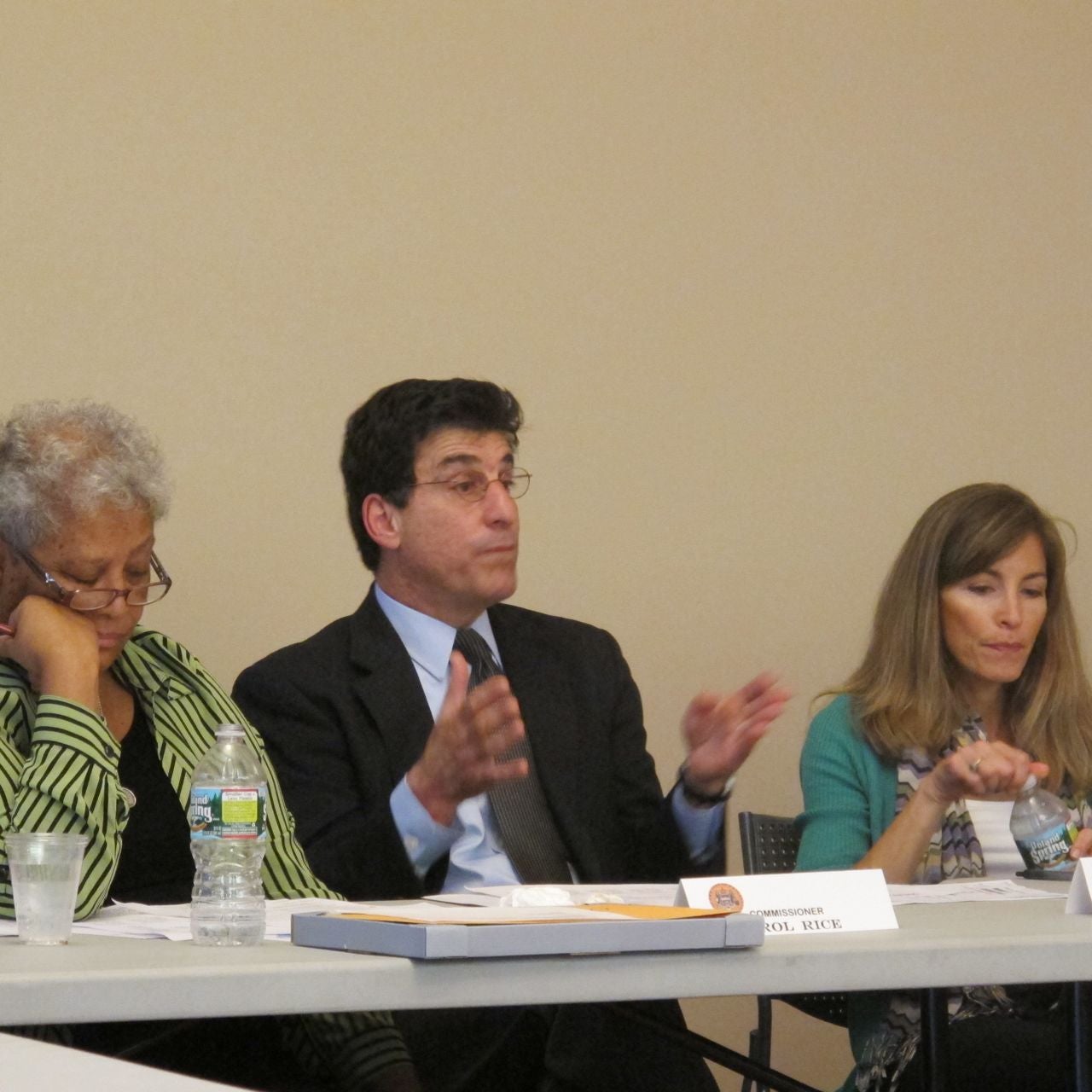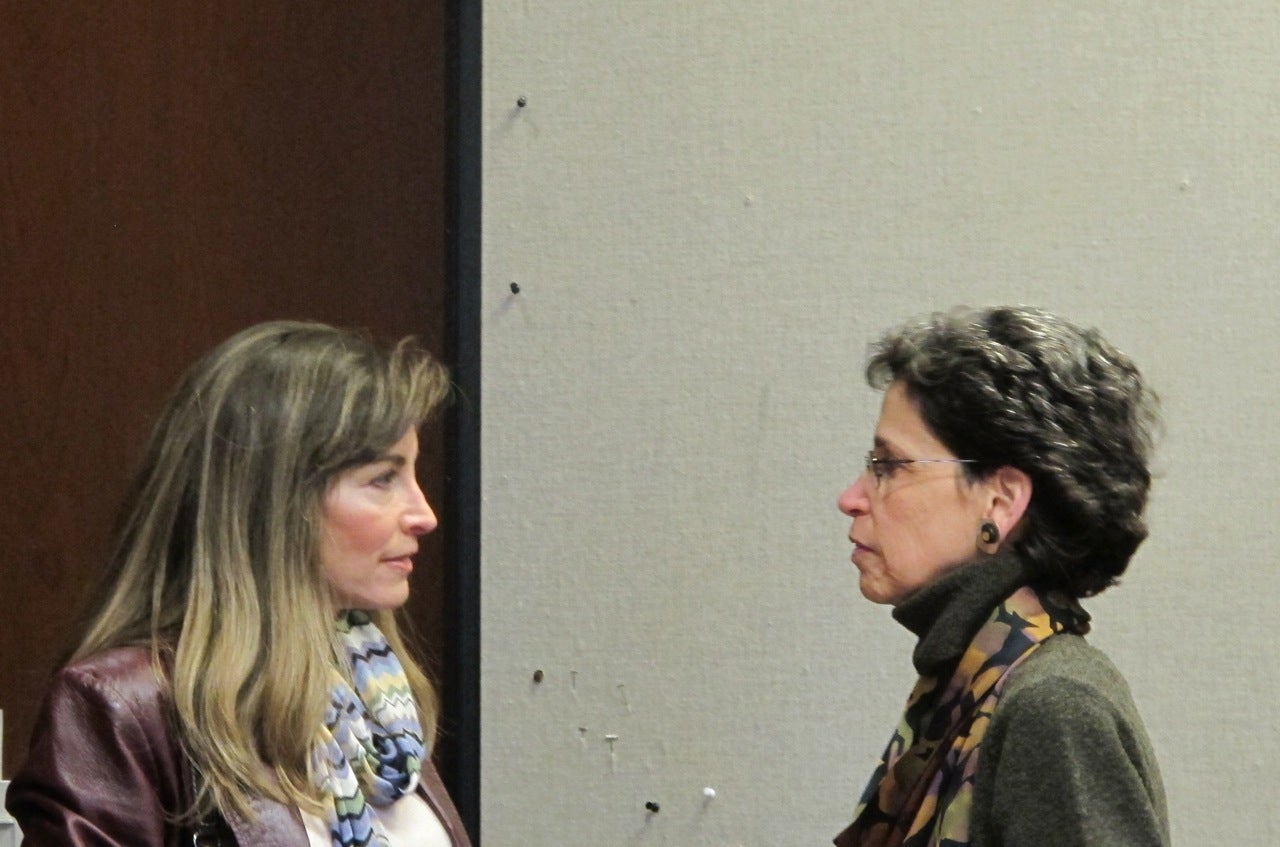Parks and Rec readies itself for the high season
Well into the nearly two-hour meeting of the Parks and Recreation Commission, Commissioner Mike DiBerardinis spoke forcefully about the challenges and opportunities his department faces. “I don’t think there’s a better time to be working in this city in this work than today,” he said.
Throughout last night’s meeting, he sounded what’s become a rather recurring note: the merger of the parks and recreation systems has already accomplished things that couldn’t be achieved before. But, as the evening wound to a close, it would become clear, that it still had a long way to go.
Commission Chair Nancy Goldenberg began by welcoming new Commissioner Howard Neukrug, recently appointed Commissioner of the Philadelphia Water Department. Neukrug mentioned that his long career at PWD included working on the restoration of the Fairmount Waterworks, and that PWD provides in the area of $1 million in annual support to the parks.
Goldenberg then plugged two upcoming public events: the March 20th citizens’ symposium on parks and recreation at the Valley Forge Convention Center, and the parks and recreation budget hearing before City Council on April 11 at 10am.
Commissioner DiBerardinis next provided a wrap-up on the merger, promising to come to the next Commission meeting with an illustration detailing the merged departments. He also suggested that the newly-formed department had gone through some internally contentious times to arrive at the new structure.
DiBerardinis soon turned to budget concerns. The Mayor’s new budget is proposing a small increase of $180,000, he said, which is to be used specifically to extend the summer pool season by five to seven days. Additionally, the Department is in the process of raising $600,000 to ensure that all 70 pools open, he said, adding that about $500,000 of that money had already been raised.
Commissioner Leslie Ann Miller asked if the Department was “setting a precedent for private funding of pools,” and DiBerardinis responded with an emphatic “No!” In fact, he said, five-year projections for 2012 and forward see full municipal funding of the pools.
The Commissioner then briefly detailed two recent success stories: the groundbreaking for a $1.1 million trail widening and restoration project extending about 3/4 of a mile from the Falls Bridge to Ridge Avenue; and the groundbreaking for the $2.2 million Hawthorne Park.
To a question from Miller about the maintenance of such new projects, DiBerardinis said that the Department intends to set high standards and that the merger has actually given the Department more capacity providing personnel from about 100 skill trades.
Commissioner Jeffrey Hackett raised a question about storm water management at the new spaces and Parks executive director Mark Focht assured him that both exceeded PWD requirements.
Commissioner Debra Wolf Goldstein asked for elaboration on budget matters. Last year’s Mayoral budget included a proposed $2.5 million increase for the Department, said DiBerardinis. Not only was that disapproved, but the Department saw further cuts to its funding. “We’re thin but we’re holding on,” he summed up.
Commissioner Pete Hoskins interjected that some Commission members had met with the Mayor to reinforce that the Commission thinks the Department is doing a great job. He added that the Commission also intends to meet with key Council members, all with an eye toward cementing the importance of supporting the Department. Commission Goldstein asked if the possibility of a parking tax, as some Commission members had discussed, was brought up, but Hoskins said no specifics had been examined.
Commissioner Miller next asked for an update on tree planting. DiBerardinis said that $2.5 million towards the effort had recently become available and so the Department will soon proceed with Spring planting efforts. The Department has also received $2.3 million in state funding, he reported, to target storm water management efforts via tree plantings at about 35 rec centers around the city. Last year, the Department planted about 15,000 trees, DiBerardinis estimated.
DiBerardinis discussed other elements of the program, such as a tree removal component (slated to get rid of approximately 1,800 dead or dying trees), reforestation of larger swathes of land, and citizen greening efforts encouraging neighbors to plant trees. To Miller’s point about paying attention to using proper species, DiBerardinis said, the days of sidewalks with “mountainous cement slabs” are over, and that the City has learned to use native trees or those that have “adapted to the urban environment.”
Commissioner Carol Rice asked for a report on new recreation center developments. Last year, said DiBerardinis, pool users nearly doubled from the previous year, and 1,800 more children participated in summer camp programs. Additionally, he said, “we’re using the parks as a platform for [recreational] programs” like urban agriculture, birdwatching, bike clubs, and rowing. “We’re moving recreational programs into this wonderful canvas that the park has given us,” he said.
Jean Hunt of the P&R’s Youth Development department next presented an update on Cobbs Creek Park. After meeting with neighbors concerned about safety issues, P&R honchos earlier this year decided that increased programing that would appeal to diverse constituencies, along with infrastructure improvements, would help.
Five major cleanups have been scheduled for April, with 1,000 volunteers already signed up. A packed slate of movie nights, bike clubs, family days, a 5K race, and, interest pending, weekly hobbyist efforts has been organized. In addition to the cleanups, infrastructure improvements include increased police presence, and improved signage and lighting. DiBerardinis praised the effort as “a wonderful opportunity” that provided the “perfect chance to use the merger to add value.”
Three brief committee reports followed, with Goldenberg taking a moment to introduce the Land Use Committee by saying that the Commission could be proud of its speedy drafting of an Open Lands Protection ordinance, one that “we have every reason to believe will be passed in the next couple of weeks.”
Committee Chair Wolf Goldstein, who steered that effort, said that it had been the “most important project” she’d ever worked on, including those during her stint at the former Fairmount Park Commission. And DiBerardinis, who once also sat on that Commission, sounded another familiar note. “Reflecting on the way land transfer was dealt with at the former Commission, this is way better,” he said. There’s no room for “shenanigans” in it, he added, “there’s no ability to do it in any other way than in an open, clear process.”
Hackett added a note of appreciation for the ordinance’s insistence that the Commission not be an in-name-only operation, and Goldenberg seconded that, saying, “I know that Council feels the same way.”
Committee Chair Hoskins next presented his report on the recent activities of the Revenue Enhancement Committee, pointing out that the next Commission’s hurdle to clear would be “steadfastly improving the way that parks and recreation gets funded.” He mentioned that work on a concessionaire survey continues — with a key finding being that the city “can be very difficult to work with” — as does best-practices interviews with reps from other major cities. Hoskins also expressed worry that private funders — who gifted the system with some $15 million last year —could “get nervous and retreat” if public funding isn’t kept up.
Communications Chair Rice next presented the second PaRC Stars award, this time to Diane Kunze, the “mastermind” behind Friends of Overington Park in Frankford.
Goldenberg next turned over the floor to questions and comments from an unusually active — and unhappy — audience. A recurring thread among questioners was a perceived lack of communications coming from the Department on everything from greening efforts at rec centers, to summer employment opportunities.
Two individuals brought specific problems to the table that seemed emblematic of the oft-plagued system and quite contrary to the rosy picture painted by the Department.
Judith Robinson wanted to know “What happened?!” to promises that the neglected Winchester Rec Center in North Philadelphia would be upgraded. As always, DiBerardinis responded to the putting of his feet to the fire with aplomb. The space needed capital investment, he acknowledged, and he knew Councilman Darrell Clarke had been interested in it. “With your nudge,” DiBerardinis said, “I can go back to Councilman Clarke.”
Dorothy Perrine next spoke out about poor conditions at Chew Rec Center in South Philadelphia. “We have volunteers, but we need materials to get started,” she said, complaining of “grassless” fields and drainage problems that can cause 3-foot deep water backups after heavy storms. DiBerardinis seemed to know of these issues, too, but added that “my guess is that the field needs. . . more of a renovation than a repair. That’s a big ticket item.” Still, he promised to “do what we can for you.”
DiBerardinis’ upbeat but nevertheless cautious tone was in contrast to much that had gone before. Leaving the room, one couldn’t help wonder if this really was the best time to be in his particular position.
Contact the reporter at jgreco@planphilly.com
WHYY is your source for fact-based, in-depth journalism and information. As a nonprofit organization, we rely on financial support from readers like you. Please give today.





